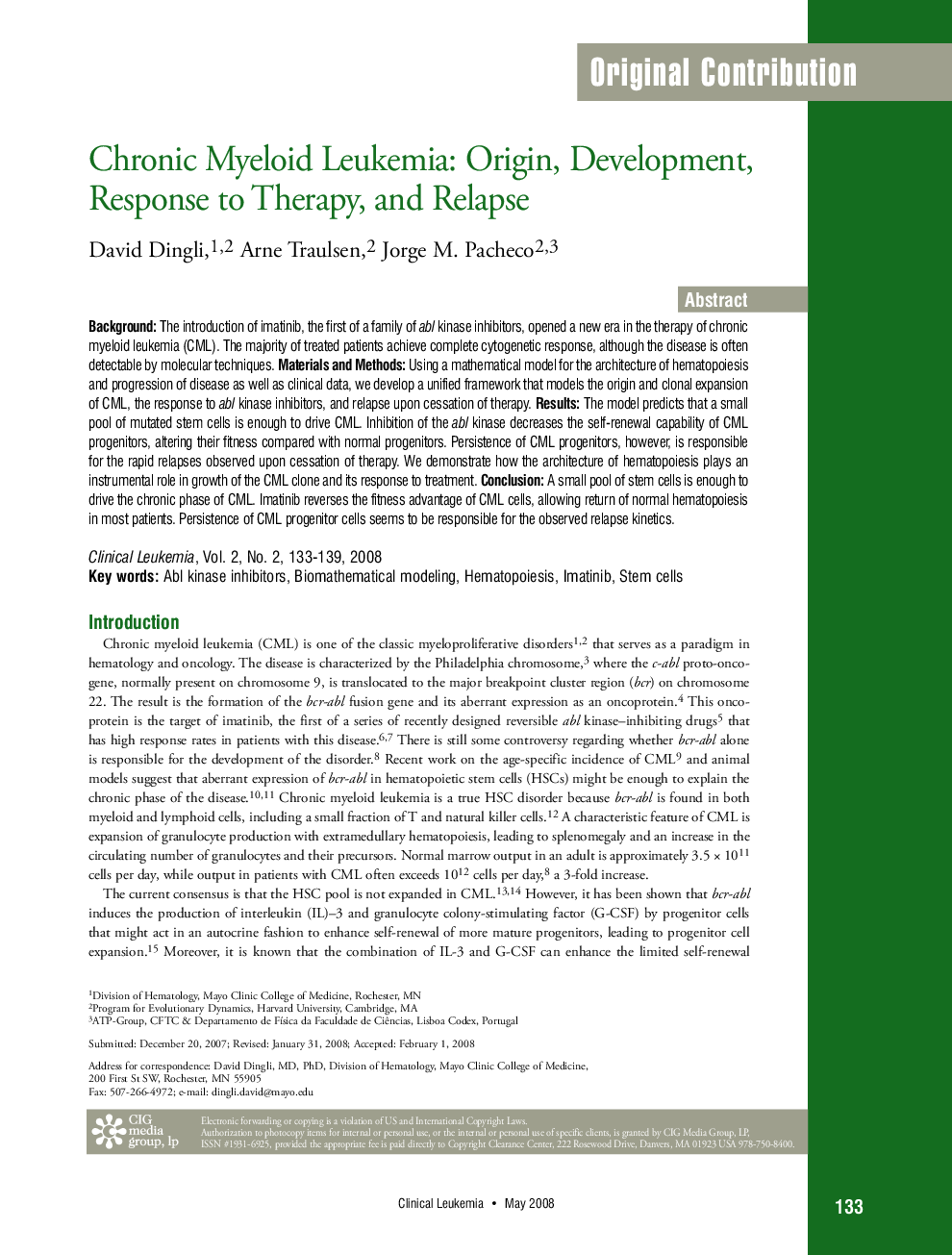| کد مقاله | کد نشریه | سال انتشار | مقاله انگلیسی | نسخه تمام متن |
|---|---|---|---|---|
| 3980972 | 1257643 | 2008 | 7 صفحه PDF | دانلود رایگان |

BackgroundThe introduction of imatinib, the first of a family of abl kinase inhibitors, opened a new era in the therapy of chronic myeloid leukemia (CML). The majority of treated patients achieve complete cytogenetic response, although the disease is often detectable by molecular techniques.Materials and MethodsUsing a mathematical model for the architecture of hematopoiesis and progression of disease as well as clinical data, we develop a unified framework that models the origin and clonal expansion of CML, the response to abl kinase inhibitors, and relapse upon cessation of therapy.ResultsThe model predicts that a small pool of mutated stem cells is enough to drive CML. Inhibition of the abl kinase decreases the self-renewal capability of CML progenitors, altering their fitness compared with normal progenitors. Persistence of CML progenitors, however, is responsible for the rapid relapses observed upon cessation of therapy. We demonstrate how the architecture of hematopoiesis plays an instrumental role in growth of the CML clone and its response to treatment.ConclusionA small pool of stem cells is enough to drive the chronic phase of CML. Imatinib reverses the fitness advantage of CML cells, allowing return of normal hematopoiesis in most patients. Persistence of CML progenitor cells seems to be responsible for the observed relapse kinetics.
Journal: Clinical Leukemia - Volume 2, Issue 2, May 2008, Pages 133-139